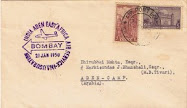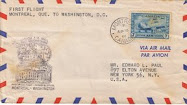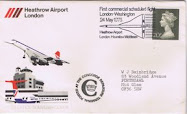The Graf Zeppelin was almost lost on its second trip "1. Amerikafahrt 1929" to the United States on 16th May 1929. Shortly after dark on the first night of the flight , the airship lost two of its five engines while over the Mediterranean off the southwest coast of Spain forcing Dr. Eckener to abandon the trip and return to Friedrichshafen. While flying up the Rhône Valley in France against a stiff headwind the next afternoon, however, two of the remaining three engines also failed and the airship began to be pushed backwards toward the sea.
As Dr. Eckener desperately looked for a suitable place to crash-land the airship, the French Air Ministry advised him that he would be permitted to land at the Naval Airship Base at Cuers-Pierrefeu about ten miles from Toulon to use the mooring mast and hangar of the lost airship Dixmude (France's only dirigible which crashed in the Mediterranean in 1923 resulting in the loss of 52 lives) if the Graf could reach the facility before being blown out to sea. Although barely able to control the Graf on its one remaining engine, Eckener managed to make a difficult but successful emergency night landing at Cuers. After making temporary repairs, the Graf finally returned to Friedrichshafen on 24 May.
Cover flown on the interrupted American Flight. Cover was postmarked on board the Graf Zeppelin on 16.5.1929. Also has the circular special
"1. AMERIKAFAHRT 1929" cachet in blue
Cover bears the one lined "interrupted flight" cachet.
This cover is from my collection
Mail carried on the flight received a one-line cachet in German reading "Delivery delayed due to cancellation of the 1st America trip" and was held at Friedrichshafen. On 1st August 1929, the airship made another attempt to cross the Atlantic for Lakehurst, arriving there on 4 August 1929. Four days later, the Graf Zeppelin departed Lakehurst for another daring enterprise — a complete circumnavigation of the globe.
Reverse of the above cover showing New York backstamp of Aug 5 1929. 3AM.
The Graf Zeppelin's return flight from Lakehurst to Friedrichshafen was on August 8, 1929 piloted by Dr Hugo Eckener, arriving there on August 10th It carried a crew of forty with twenty
two passengers and thousands of pieces of mail. This was the first leg of the Round World flight of the Graf Zeppelin.
Lakehurst became the official point of origin for the round-the-world trip. William Randolph Hearst paid $100,000 dollars to finance this round-the-world trip on the proviso that the flight would be considered as started from the US when it passed the Statue of Liberty in New York.
The Graf Zeppelin round-the-world trip can be viewed from two perspectives. The Americans viewed the round-the-world flight from Lakehurst to Lakehurst. The Germans saw the round-the-world flight from Friedrichshafen to Friedrichshafen
A cover flown from Lakehurst on the round the world flight
US mails were stamped with a circular cachet in red
LZ-5 and LZ-127 "Graf Zeppelin" on Czech stamps issued to publicize PRAGA 1978
Graf Zeppelin on 1976 issue of Upper Volta
Graf Zeppelin on a 1981 Hungarian issue
Graf Zeppelin over Brasov, Romania - part of 1978 issue
Graf Zeppelin over Sibiu, Romania - part of 1978 issue.



















8 comments:
interesting story ......!
Nice story and superb stamps. Zeppelin history and stamps are very attractive IMHO (I'm sure you are well familiar with the Zeppelin's visit to Finland, and the '1830' stamp error that was born with the overprints)
PS. Feel free to drop at my stamps blog.
Hi
I have a stamp of Air Afrique "Ivory Coast" 1967 but it is rare I have not seen it in your collection or elsewhere.
http://haniastamps.blogspot.com/2011/01/republique-de-cote-divoire-1967-air.html
So if you are interested you can contact me on: haniabouakel@gmail.com
Regards
An Article Related To Aerophilately http://indianphilately.blogspot.com/2011/02/stamp-on-man-who-dropped-first-airmail.html
great post thanks
I am not too crazy on aero nuts
I prefer girls
Consultant?
on what subject?
Beautiful stamp :)
Post a Comment